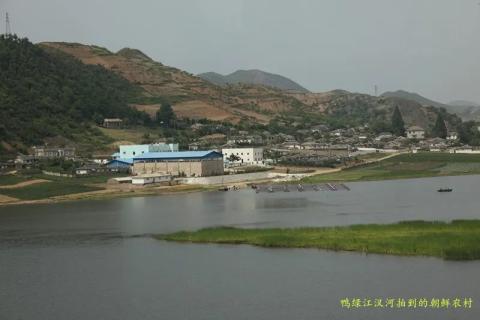
In June, when the flowers were blooming, a few friends gathered to chat. After a few bottles of beer, he began to talk nonsense, in the sky and on the earth. During the bragging, the word "North Korea" suddenly popped up, which aroused everyone's interest. Taking advantage of the drunkenness, they unanimously agreed to go to North Korea to see this mysterious country.
1. Dandong looking across the river
When the sun was rising, the express train we took stopped at Dandong Railway Station. Dandong City, formerly known as Andong, is located in the southeast of Liaoning Province, separated by a strip of water from Sinuiju City in the Democratic People's Republic of Korea and across the Yalu River. It is the easternmost starting point of the Great Wall of China and the northernmost starting point of the 18,000-kilometer coastline. It is located in the center of Northeast Asia. It is the largest and most beautiful border city in China and a heroic city that experienced the baptism of war to resist U.S. aggression and aid Korea.
The excitement swept away the fatigue of the journey, and the group packed up their bags and headed straight to the Yalu River. Ah, here it is! The broad Yalu River appears in front of you. The green water of the river is gleaming with silver. The tall Yalu River steel bridge connects the two sides. Another broken steel bridge is lying side by side quietly on the Chinese side. The bridge body still has bullet holes. Telling people about the madness of the war.
Looking at both sides of the Yalu River, we were stunned: the river was blue, the willows on the banks were green, the scenery was beautiful, and the colors were picturesque. The gods want to stay here and get drunk. How many times have they dreamed of the wonderful world on earth? Extremely Beautiful!
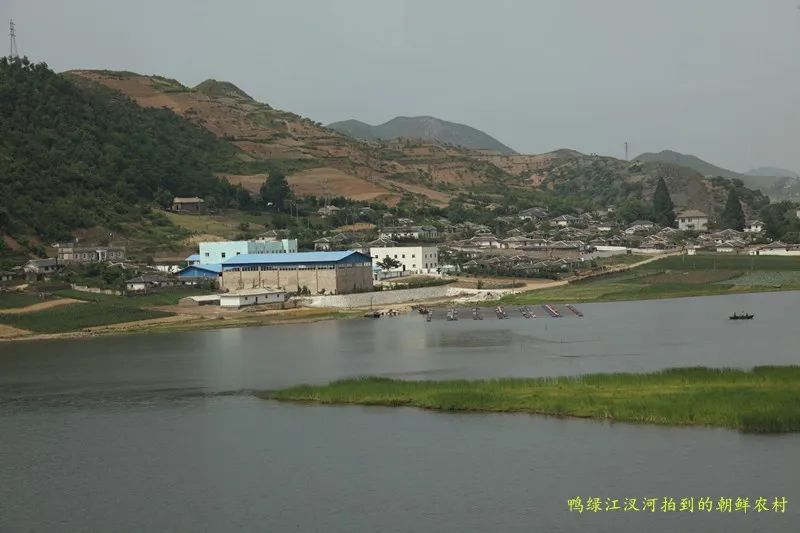
But the strong visual contrast makes us clearly feel the differences between the two sides. Across the river is Sinuiju City, the fourth largest city in the Democratic People's Republic of Korea, which is equivalent to the provincial capital of our country. Looking across the river, some buildings with white walls and red roofs can be seen dotted among the green trees. The tour guide in Dandong said: The lower one is the camp post of the North Korean border guards, and the three-story higher one is the three-star hotel in Sinuiju. Looking around, there are no tall buildings, nor roads, buildings, crowds or traffic along the river bank. A taller chimney stood quietly there, with no emissions visible in the chimney. The tour guide told us: North Korea is still a completely planned economy, and all factories produce according to the national plan. Because the entire national economy is in a difficult period, most factories are often suspended.
The red sun shines warmly on my head, and the other side of the Yalu River is quiet. Looking back, in Dandong City on the Chinese side of the Yalu River, high-rise buildings stand tall and connected among green trees and flowers; the riverside park is bustling with traffic and crowds, creating a vibrant and prosperous scene. In contrast, the other side of the river looks like an attached suburban countryside.
North Korea, our lovely friendly neighbor, what exactly are you like?
2. North Korea River Tour
Our eagerness to find out the secret was stopped by the tour guide. She told us that according to the schedule, the time to cross the river was the morning of the next day; but today we arranged a river tour in North Korea, that is, taking our cruise ship from some branches of the Yalu River. Enter North Korea in the Liujiang section and have a panoramic view of the North Korean border scenery. This is also a good arrangement, enough to arouse our excitement and appetite.
After a hurried lunch, the cruise ship set off. Looking at both sides of the river, we were surprised to find that the water of the Yalu River was far from as wide and smooth as the large iron bridge. It turns out that the Yalu River, with a total length of 795 kilometers, has a drainage area of more than 64,000 square kilometers. Most of the river valleys in the upper reaches are very deep, similar to canyons. There are mountains on both sides of the river, with an altitude of 600-1,200 meters. The water is fast and full of waterfalls and reefs. There is a large amount of alluvial soil deposited in the middle section of the river bed. The river divides into many different branches along the current, forming hundreds of islands, wetlands and deltas of varying sizes. The tourist spot we are in is where these rivers intersect. Seventy percent of these hundreds of islands were assigned to North Korea. According to the tour guide, this was the result of the older generation of revolutionaries' support for internationalism in brotherly countries in the early days of liberation. It also includes half of Changbai Mountain. China and North Korea have agreed that as long as ships sailing on the Yalu River do not land on the other side's land bank, they will not be considered entering the other country's border. This can be considered brotherhood. The "North Korea River Tour" arranged by the travel agency is to go around a certain branch of the river, which takes about 30-50 minutes. Although the land and islands on both sides of the strait belong to North Korea, the river water is publicly owned. This is very interesting and in-depth. It's within the other side's territory, and it doesn't count as crossing the border. Two countries, one system, which is probably unique in the world! The route of our cruise ship was between Jiuli Island and Yuchi Island. The cruise ship took about 40 minutes to go back and forth. It was about 20 to 30 meters wide from the shore and about ten meters close to the shore. Because it is an alluvial land, connected mountains extend from the edge of the flat plain. Rice is planted in every field, and people are occasionally seen working; next to a building that looks like a military camp, there are more than ten People's Army soldiers in yellow military uniforms, working in pairs, carrying what looks like stones. Maybe they are doing infrastructure construction. The tour guide repeated seriously: "We have gone abroad. Don't use English and Korean, don't say hello to them, and don't take pictures, because they are very vigilant and heavily guarded. There are many bunkers and sentries on the shore and in the mountains. We are being monitored, and if there is a conflict, it is a diplomatic incident." My scalp suddenly felt numb. The tour guide also pointed to some buildings on the shore and on the mountain and said that they were North Korean generals' villas, that was a military port during the war, and that they were Tongjun Pavilion, one of the eight scenic spots in Kansai, North Korea, Seolryomiao, etc. Xue Li was Xue Rengui, the general who conquered Korea in the Tang Dynasty. How could the conquered Korea still worship him as a god and build temples to worship him? It seems that strength is the last word.
After returning from the cruise, the tour guide took us to a place called "One Step", which is the closest place between North Korea and China. The branch of the Yalu River flows through here, and its width is no more than 10 meters. There is only a simple bungalow here, with two off-road vehicles parked, and two young People's Liberation Army soldiers standing guard. On the other side of the river, a two-meter-high barbed wire fence stretches along the water's edge for who knows how far. Through the barbed wire fence, no one could be seen, and large areas of rice and corn were growing normally. The tour guide said that North Korea’s crop yields are low due to a lack of improved seeds and fertilizers.
Next to "One Step" is the Hushan Great Wall, the easternmost starting point of the Great Wall. Hushan is located on the bank of the Yalu River, 15 kilometers east of Dandong City. It stands alone on the flat ground and the main peak is 146.3m high. The steps of the Great Wall are very steep and dangerous. We carried forward the fearless revolutionary spirit, panted heavily, and climbed to the top of the summit fire platform; ah! This is really: "The first station at the east end of the Great Wall", with a broad and endless view. The fields, houses and ancient Yizhou City of North Korea on the other side, the high-rise buildings of Dandong City, the Mashi Sandbar, and the dozens of branches and islands of the Yalu River are all visible and unobstructed.

A sense of pride arises spontaneously: lovely motherland, great nation; solid country, wise ancestors! Be strong, China!
3. Crossing the Yalu River
The song "Mighty and high-spirited, crossing the Yalu River..." has accompanied me throughout my childhood; today, I am going to cross the river too! Stepping out of Dandong Customs, a North Korean tourist bus was waiting there. Two young tour guides from North Korea, a man and a woman, came towards us with big smiles. "Hello everyone, please get in the car." Their fluent Chinese showed their professional level. Everyone got in place in order, and as soon as the car started, it drove onto the Yalu River bridgehead. It turned out that the customs and the bridgehead were connected at a short distance.
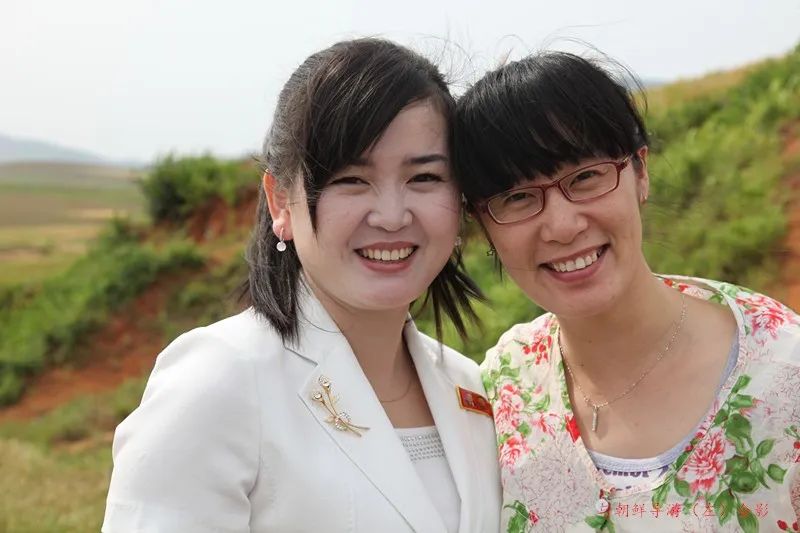
There are actually two Yalu River Bridges in Dandong. The first bridge started construction in May 1909 and was completed in October 1911. It was built by the Railway Bureau of the Japanese Governor-General in Korea at the time. It was originally a railway bridge with twelve holes, 944.2 meters long and 11 meters wide. , the fourth hole from the center is the opening and closing beam, which can be rotated 90 degrees to facilitate the navigation of ships. From November 1950 to February 1951, U.S. aircraft bombed many times and the bridge was completely destroyed. Half of it was left on the Chinese side, and only a few bare piers were left on the Korean side, which is the current broken bridge. In 1993, our country restored and developed the remaining half of our side into a war relic-type tourist attraction, named "Yalu River Broken Bridge". The bridge is painted light blue, which means not forgetting colonial rule and wars of aggression, and praying for and maintaining world peace. Above the bridge head, the five golden characters "Yalu River Broken Bridge" on the huge copper plaque hanging in the middle of the curved steel beam were inscribed by former Defense Minister General Chi Haotian. Thousands of bullet marks on the broken bridge remain to this day, seeming to be witnesses of the war to resist U.S. aggression and aid Korea. The broken bridge seems to be a historical old man standing in the river, paying tribute and remembering the heroic deeds of the Chinese People's Volunteers. Nowadays, the Broken Bridge on the Yalu River is a key national patriotic education demonstration base. The numerous bullet marks left on the bridge and the flocks of white pigeons flying at the bridge's head present two different scenes of war and peace to tourists at the same time, which is deeply educational. In April 1937, the Japanese, who were under colonial rule over Northeast China and Korea, built a second railway bridge less than 100 meters upstream of the bridge, which was opened in April 1943. That is the bridge that is now in operation. During the War to Resist U.S. Aggression and Aid Korea, the two Yalu River Bridges were the main transportation arteries for my country to support the Korean front line.
Before I could look out the window and take a closer look, the tourist bus had stopped at the North Korean Customs near the bridge on the south bank. Is this a river crossing? It’s only been a few minutes, but I still don’t feel that “vigorous and high-spirited” feeling at all! In the customs compound, a tall portrait of Kim Il-sung stands on the wall of the front building, with large red slogans written in Korean on both sides; what does it mean? I don’t know a word, so I guess it’s something like “Great Leader”. North Korean soldiers with serious faces were fully armed and patrolling in formation. A middle-aged man with a stern face stood by the car door, examining his passport absolutely seriously. He looked at the passport from his face, and then from the passport to his face. There was nothing sloppy about it. A companion took a few steps quickly when leaving, and immediately Was called back and reviewed again. They queued up to enter the customs hall, a place that can accommodate about a hundred people. Two security inspection machines were constantly checking all the items carried by everyone; at the exit of the security inspection machine, there were two more security inspectors. Open the bag and check, and take out all the items and examine them one by one. Electronic products, mobile phones, computers, USB flash drives, MP3s, cameras with lenses with a focal length of more than 150 mm, etc. are all prohibited. Occasionally, if something is prohibited, it is immediately thrown into a large cardboard box under the table. Another person was holding a security checker and checking people one by one, from head to toe, very carefully. After more than an hour, we finally passed the security check and got back on the tour bus. The tourist bus restarted, drove out of the customs, and took us to Sinuiju Railway Station. The streets we passed looked like our rural streets. They were not hardened and not very wide. There were basically bungalows on both sides. There were no shops, stores, etc., and few pedestrians in sight. It was relatively deserted. More than 20 minutes later, the train stopped. In the small Sinuiju Railway Station, more than a hundred Chinese tourists were waiting for the train, and no one else could be seen. Eight or nine people wearing North Korean military uniforms with Kim Il Sung and Kim Jong Il badges on their chests were walking back and forth in the waiting room. It was unclear whether they were waiting for the bus or on duty. Are they the Security Bureau personnel mentioned by domestic tour guides? unknown. But my intuition is warning: We are no longer in China, so it’s better to be careful!
We, who are used to crowded domestic train stations, can’t help but be confused. Is this a train station in a provincial capital city?
4. Special train to Pyongyang
Through the unlit, dim underground passage, the tour guide led us to the platform. Looking around, we can see that the "International Tourist Train" we are going to take is parked on the small and damaged platform. We count eight carriages, and their appearance is similar to the green ordinary passenger carriages in China in the 1960s and 1970s. Although Even with a new coat of paint, it still looks very old. There were no other vehicles on the fork roads, and only a dozen or so dilapidated freight cars were parked. Wooden boards were tied to the holes in the iron sheets, or straw mats were sandwiched between the inner and outer wooden bars. It looked like they were still in use. Two or three sanitation workers, also wearing the same yellow coats as our domestic sanitation workers, were busy pushing garbage carts. Seven or eight heavily armed People's Army soldiers stared at the tourists getting on the bus with alert eyes. There were also three or four men and women in casual clothes with red armbands on their left arms, walking back and forth on the platform. They looked like police officers.
Two North Korean tour guides greeted us and quickly got on the bus. There were no tickets, and the tour guides assigned seats in the carriage based on people. According to standards, the train we took was an "international tourist train", which should be a high-end soft sleeper carriage. But the carriage in front of us surprised us: the furnishings were extremely simple, the two rows of seats facing each other looked like old sofas that had been discarded by better people in the 1970s and 1980s, and the overall damage of the carriage was completely beyond our expectations. Imagine; even thirty or forty years ago, the ordinary carriages running in our country should have been much better than this. Now in China, if you want to find such a carriage as a cultural relic, you will probably have to go through a lot of trouble or it will be very difficult. What’s unique is that the eight carriages are all different. They are carriages of different models and periods put together to form a special train. Walking through the connection between the carriages, you can see the ground and rails through a gap of 20 to 30 centimeters wide. The height difference between one section and another is like a step. Taking one step over it is really a bit scary.
The two North Korean tour guides were very enthusiastic and introduced themselves: The male surnamed Zhao, 27 years old, graduated from Pyongyang University of Foreign Studies, has been a tour guide for four years, has not been to China yet, but has received many Chinese tourists; this guy is handsome, talkative, and knowledgeable It is also relatively broad, can talk a lot about China’s history and current situation, and is relatively objective. The female surname is Kim. She is 25 years old. She is very beautiful. She graduated from Pyongyang Tourism College and has been a tour guide for more than two years. She does not speak much and is always smiling. She is very popular. According to them, the distance from Sinuiju to Pyongyang is 228 kilometers. Under normal circumstances, the train takes 5-6 hours. North Korea's trains were electrified in the 1970s, but now there is a power shortage. If there is a power outage, there is no guarantee. In addition, the railway is a one-way line and the road conditions are aging, so the speed is relatively slow.
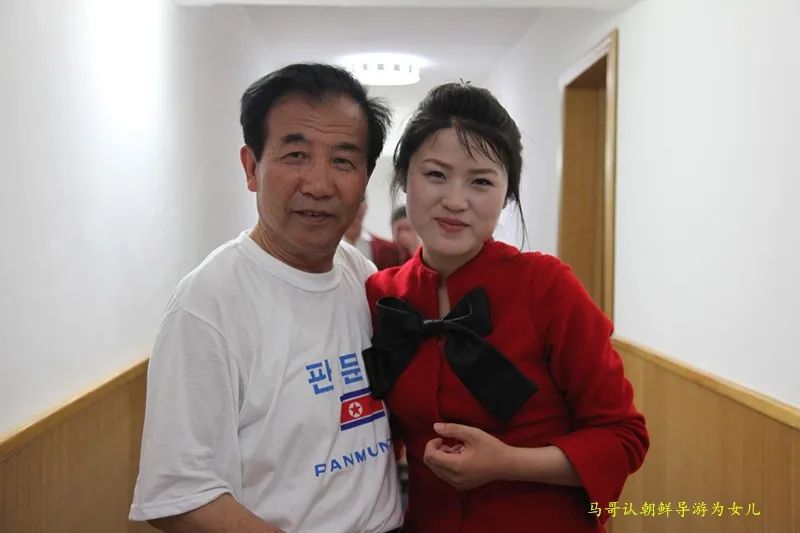
Before the bus left, the tour guide brought lunch, which was packed in a small disposable lunch box, one for each person: a box of rice; a box of non-staple food, which included a piece of fried tofu, a small piece of scrambled eggs, a small piece of beef, and braised beef A small piece of eggplant. A bottle of mineral water and a pair of disposable wooden chopsticks.
Before crossing the border, the Dandong tour guide introduced that North Korea’s food is characterized by being cold, cold, sour and spicy; that is, eating cold rice, drinking cold water, sour kimchi, and liking spicy food. Be mentally prepared. Looking at it, it turned out to be true, it was all cold. When hesitating, the Dandong tour guide whispered: "Eat, this is a high-standard meal specially provided to international friends. Ordinary people can't even think of it." Then eat it, it will only cost you a few more norfloxacin. After tasting it carefully, it tastes quite good. This meal, cold rice and cold water, has an exotic flavor!
5. Good scenery along the way
After lunch, no whistle was heard, the train started and slowly left the station. There are no relatively tall buildings in Sinuiju outside the car window. They are generally two, three, or three or four stories, mostly with white walls, and most of the walls have large red slogans written on them. Not much of the urban area was visible, and a large area of farmland appeared in front of the train.
A plain river with clear flowing water; green crops and thick shade of green trees. The shadows of the mountains in the distance are faint, and there are dots of villages nearby; the sky is clear and the sun is red; there are flying red flags on the ridges of the ground, and there are groups of farmers working in the fields; the old black cows are wagging leisurely beside the big wooden wheels on the roadside. At the end, three or five children were playing in front of the farmhouse. What a beautiful landscape painting, what a beautiful pastoral scenery! The countryside of North Korea is so beautiful!
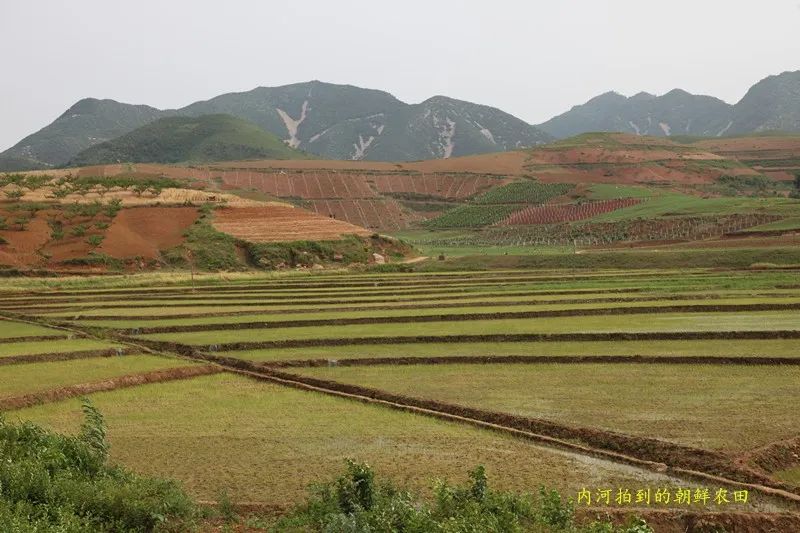
Unable to resist the strong desire, I secretly took out my camera and tried to take a few memorable photos, but as soon as I made any move, I was stopped by the serious-looking car staff. Brother Ma, who was traveling with him, was hiding in the carriage. As soon as he opened the window, the man with frost on his face immediately came over and closed the glass again without ceremony. I intuitively judged that this person should be what domestic tour guides call "a member of the North Korean Security Bureau."
With people under the roof, we had no choice but to be obedient and put our cameras back in our bags.
The Democratic People's Republic of Korea, referred to as North Korea, is located in the northern part of the Korean Peninsula in eastern Asia. It borders China and Russia to the north, the Yellow Sea to the west, and the Sea of Japan to the east. The founding of the country was announced on September 9, 1948 under the leadership of Kim Il Sung, and the Workers' Party of Korea was in power. The south is separated from South Korea by the Demilitarized Zone, with a land area of 122,762 square kilometers. The origin of the name of North Korea is: In 1392, Li Chenggui, who was originally in charge of the Shuangcheng Office of Liaoyang Province in the Yuan Dynasty, overthrew the Goryeo Dynasty and proclaimed himself king. He sent an envoy to ask Ming Taizu of China to rule on the name of the country as "North Korea", which means "the country of Korea and Japan". .
The national average altitude is 440 meters. The northern part is mostly mountainous, the northeastern region has deep and narrow valleys, and most of the coastal plains are in the western region. Mountainous areas account for about 80% of the country's land area, and arable land accounts for 13.9%. The main rivers include the Yalu River and Tumen River on the border between North Korea and China. It has a temperate monsoon climate, the vegetation is temperate deciduous broad-leaved forest, the average annual temperature is 8 to 12°C, and the average annual precipitation is 1000 to 1200 mm. Koreans proudly call it: Three Thousand Miles of Splendid Country. The railway line we are traveling on is located on the coastal plain in the west, and the natural conditions are very good.
The train stops and goes, not very fast. We looked out of the car window and saw that the sleepers under the tracks were very old. There are dilapidated old pine trees, newly added poplar and willow trees, cement ones, and ones with a piece removed at intervals. On some sections of the road, the roadbed is slightly tilted, and you will feel a tilt when sitting in the car.
On the roadbed one meter away from the stone cushion of the railway track, there is a sidewalk for ordinary people. There are people walking, carrying things on their backs, and people riding bicycles. Trains and pedestrians walk in harmony, without giving way to each other and without hindrance. This can be considered a major feature. When we first saw it, we were all surprised. How is this possible? When I think about it carefully, I feel relieved. The train is slow.
A few dozen meters away parallel to the railway line is the main highway from Sinuiju to Pyongyang. Vehicles occasionally pass by and the dust is billowing. Looking closely, the roadbed is not too wide and has not yet been hardened. There are not many vehicles on the road, and the ones that occasionally pass by are mostly old-fashioned trucks.
Most of the crops in the farmland are patches of rice, followed by corn, potatoes, and small patches of barley that are about to mature. As the train moves, groups of farmers working in the fields can be seen. This confirms what the domestic tour guide said. North Korea is still practicing agricultural cooperatization, and collective labor is recorded as work points.
It was probably after school in the afternoon. From time to time, primary school students wearing red scarves passed by in formation on the field paths. They waved enthusiastically to the "International Tourist Train", reflecting the Korean people's friendship towards international friends. Among the working people, some people waved to the train from time to time.
The residential buildings along the railway line are concentrated and neat. Viewed from the train, the white walls, black roofs, ridges, and styles are basically the same. The appearance is slightly old, but it is also very beautiful. Domestic tour guides said: These were all built uniformly during the "New Rural Construction" movement carried out by North Korea in the 1970s and 1980s. They were distributed according to needs and everyone had a room.
Along the way, Juche ideological towers were built in all larger places. In front of the gates of some domestic party, government, and military offices, there were large portraits of Kim Il-sung and two symmetrical red slogans. In some places, there are large red flag-like buildings with big red slogans written on them. It's a pity that in front of Chaowen, we are all blind and do not understand a word.
Along the entire railway line, ranging from near and far, there are a large number of people using primitive tools to repair the railway. They are lined up in a row. There are hundreds of people and dozens of people. The clothes of these people are similar to the migrant workers in our country; but I guess they must be the same as when we learned from Dazhai, and they were transferred from various production teams. As the sun sets, the train enters the northern suburbs of Pyongyang. High-rise buildings can be seen in the distance. There are groups of busy soldiers nearby, some are training, some are patrolling, and some are working in the farmland. There were obviously more people wearing military uniforms than ordinary people, but it was a quiet and peaceful scene.
Pyongyang, here we come!
6. Staying at Yanggakdo Island
In the square of Pyongyang Railway Station, we got on the tourist bus that picked up the station. Brand new, beautiful, comfortable seats, and clearly made in China. The only difference is: the window glass of the domestic bus is a single piece, which is good for preventing theft, but not good for ventilation; and for this North Korean tourist bus, there are small frames about 20 centimeters apart at the bottom of the window glass. The glass can be pushed and opened; this is very conducive to ventilation. Maybe North Korea has such a setting because of its very good social security and no need for anti-theft. The North Korean tour guide proudly said that this car has been on the road for less than a month.
It was the time when the sun was setting, and the tour bus took us straight to Kim Il Sung Square. This is the first place that every visiting foreigner must visit. It is intended to show respect and respect for the great leader General Kim Il Sung; through This visit can only show that you are friendly to the Korean people.
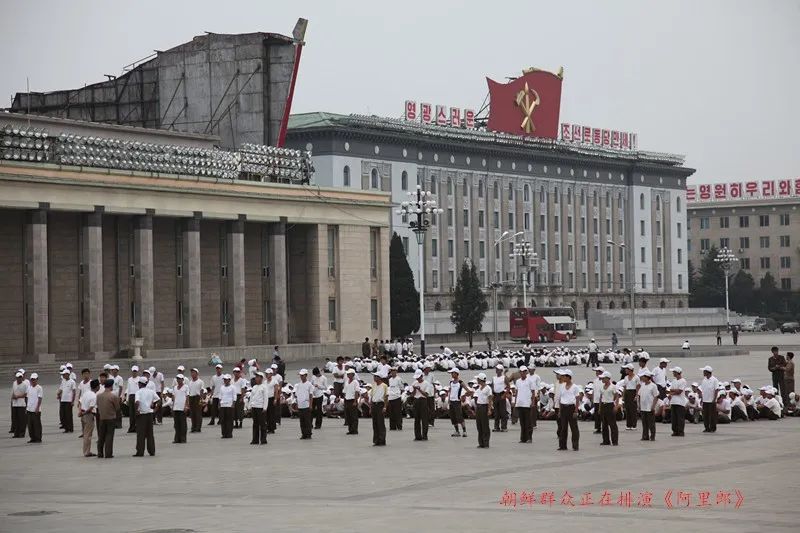
The streets in Pyongyang are very wide, with two or four strips of trees and grass, bright and clean; the buildings on both sides of the streets are grand and elegant; the streets are very clean; there are not many pedestrians and not many vehicles; it gives people a fresh and clean atmosphere. A feeling of comfort, leisure and pleasure.
Kim Il Sung Square is the central square of Pyongyang, the capital of the Democratic People's Republic of Korea, located on the bank of the Taedong River. Covering an area of 75,000 square meters, it ranks 16th among the world's largest squares. It was completed in August 1954. It is the central place for celebrations and commemorative activities. The ground is paved with granite. The square is centered on the huge bronze statue of Kim Il-sung, flanked by group sculptures under red flags; behind it is the Korean Revolution Museum; on the west side is the People's University Study Hall; on the east side is the Juche Thought Tower. This is a magnificent place. In the central venue, about a thousand people are rehearsing the large-scale song and dance "Arirang" that will be composed of 100,000 people.
After admiring the bronze statue of Kim Il Sung and the towering Juche Tower from a distance, the North Korean tour guide said: You can take pictures here. Everyone was shooting wildly.
Yanggakdo International Hotel is a 47-story high-end hotel jointly built by the North Korean government and France. It is named after being built on Yanggak Island in the middle of the Daedong River in Pyongyang. It is equivalent to a five-star hotel. Built in 1995, it has 1,001 guest rooms and 1,963 beds. It is a designated hotel for receiving foreign tourists. It is equipped with swimming pools, high-end bars, saunas, gyms and other facilities; there is a casino run by Macau people on the first floor below; and there is a revolving restaurant on the 47th floor.
We stayed on the 22nd floor of the hotel. The indoor facilities were basically the same as those in China. The bedding was clean, and toothpaste, toothbrushes, shower caps, soap, combs, bath towels, washcloths, and cups were all provided. There is a drain hole in the bathroom and there is no floor drain on the floor. Turn on the TV, there are Chaowen Channel, China's CCTV One and Four, Hong Kong's Phoenix TV, one in English and one in Russian. no computer. Looking out from the window, the city of Pyongyang at night, the gurgling Tatong River, and the sparse lights, the scenery is also very good.

In Pyongyang, there are three special-grade hotels, namely Yanggakdo Hotel, Koryo Hotel and Myohyangsan Hotel. The Koryo Hotel is located in the downtown area of Pyongyang on the west bank of the Taedong River, across the river from the Yanggakdo Hotel. Myohyangsan Hotel is located in Myohyangsan, more than two hours’ drive from Pyongyang. Usually, foreign tourists are arranged to stay in Yanggakdo Hotel. Because the island is located in the center of the river, the only access to Pyongyang city is Yanggak Bridge. There are guards on the bridge. Ordinary people cannot enter, and foreign tourists cannot go out casually. of.
The breakfast at Yanggakdo Hotel is the same buffet as in China, including steamed buns, porridge, potato chips, cakes, eggs, milk, and various side dishes, which is relatively rich. The restaurant is also very large and spacious, and the dining tables and tableware are very high-end and luxurious. The service staff are young, capable, friendly, kind and polite. Domestic tour guides quietly told us that these young men and women are all children of high-level cadre families at or above the provincial level in North Korea. After strict selection, they must have good roots, are politically reliable, and have also undergone a period of rigorous training. Children of ordinary people’s families cannot enter this foreign-related, high-end white-collar circle.
7. Approaching the 38th parallel
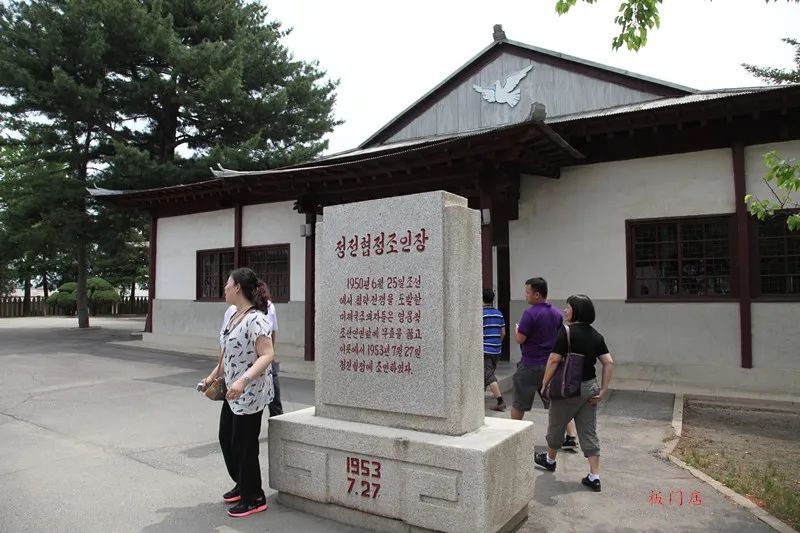
After breakfast, we set off for our destination, Kaesong, 38th Line, and Panmunjeom in southern North Korea. The tour bus passed through the city and headed south. Passing a straight avenue, the tour guide introduced: "This avenue is called Reunification Avenue. This arch made of white granite is a monument to the three charters of the reunification of the motherland. Two girls in traditional clothes are holding in their hands a symbol of North Korea." The map of the peninsula and the three charter emblems with magnolia patterns. On the outskirts of the urban area, there are a large number of connected, slightly old-colored white residential buildings. The Korean tour guide Xiao Zhao proudly introduced that these are the houses of our Korean people. He also said: We North Korean people live a very happy life. Schooling, housing, and medical care are all free. We don’t need to worry about it personally. We asked tour guide Xiao Zhao: What kind of house do you live in? He replied. Xiao Zhao said that he was not married yet, so he still lived with his parents. However, he was going to get married in September, and then he could get a house. He said that according to his standards, more than 30 square meters can be allocated; if he is promoted or rewarded in the future, he can adjust it to a larger one.
The bus was moving forward. The road surface was not very wide, the oil layer was occasionally damaged, there was an isolation belt in the middle of the road, and there were very few vehicles. There are green farmlands on both sides of the road, and the plains are dominated by rice. Gradually entering the mountainous areas, sloping dry land increased, and the main crops were corn, potatoes, beans, and barley. The hillsides and mountain tops where crops cannot be grown are covered with forest and grass, the vegetation is green, and the air is fresh. The farmers working in the fields are still a collective group.

After driving for about three hours, a fully enclosed checkpoint appeared on the highway. The tour guide said: "We have arrived at the 38th Parallel. From here on, it is a military restricted area." Heavily armed soldiers guarded the intersection, and there were barriers at the intersection. device. There are examination rooms, exhibition rooms, tourist shops, public toilets, etc. beside the road. We all got off the bus, the driver went to get the paperwork for inspection, and we were taken into the exhibition room; a young man in military uniform introduced the contents of the large charts on the wall to the tourists in Korean, and also spoke a series of Korean words. The tour guide who accompanied the group explained that the chart introduced the distribution of the 38th Parallel and the Provisional Military Demarcation Line, and then explained the precautions, such as no photography, no walking around, etc. The small tourist shop sells various small commodities with Korean characteristics; I walked around a few times and bought five pairs of copper chopsticks and five copper spoons for 100 yuan. In North Korea, Chinese people must use RMB, and North Korean stores will not accept North Korean coins. Here, the Chinese yuan is the most popular hard currency.
After walking past the checkpoint, I got back in the car and started walking. On the protective walls on both sides of the road, there were dozens of tall cement columns standing in a row. What were they doing? The tour guide Xiao Zhao asked us to guess, but everyone was confused and couldn't guess. Xiao Zhao smiled and explained: "This is for preparation for war." "For preparation for war?" Everyone was puzzled. Xiao Zhao continued to explain: "If the enemy's mechanized troops invade here and we blow these cement columns down on the road, will they still be able to come over?" "Oh, that's it!" Everyone suddenly realized. I kept muttering in my heart: "Clean up this little thing and put it on the road in our country. It is just an excavating machine for an ordinary construction team, and it doesn't take much effort. Will it be useful against the regular troops of the United States and South Korea?" I thought in my heart, and said it in my mouth. It cannot be said. The car was not far away, and a city appeared a few kilometers away on the left side of the road. The tour guide said that this was Kaicheng.
Kaicheng is famous for its proximity to the 38th Parallel. It was once the capital of Korea (918-1392) and experienced more than 500 years of prosperity. It is also the main producing area of Korean ginseng, with an area of 1,309 square kilometers and a population of 1.45 million. The full name is Kaesong Special Grade City, which is part of the Kaesong Industrial Area. It is similar to the Shenzhen Special Economic Zone in mainland China. It allows investors from South Korea and all over the world to open factories. It has now become an emerging light industry center in East Asia and North Korea.
The 38th Parallel is a military demarcation line located near the 38th degree north latitude on the Korean Peninsula. It is 248 kilometers long from east to west and 4 kilometers wide from north to south. The cause was that Japan and Russia conspired to carve up Korea in 1896, and secretly agreed to use the 38th Parallel as the dividing line. At the end of World War II, the Allies agreed to use the 38° north latitude line as the temporary dividing line for the military operations and surrender areas of the Soviet Union and the United States against Japan. The northern area was the Soviet surrender area, and the southern area was the American surrender area. After Japan surrendered, it became the temporary dividing line between the Republic of Korea and the Democratic People's Republic of Korea. At the end of the Korean War, the Chinese People's Volunteers and the Korean People's Army pushed the dividing line 5 kilometers south to the current location of Panmunjeom.
Today, we have passed the 38th Parallel; Kaicheng is right in front of us! Ahead is the real temporary military demarcation line, and the mysterious veil is about to be unveiled. We are excited, here we come!
8. Exploring the Secret Banmendian Store

The tour bus passed through four checkpoints. Ahead, Panmunjeom has arrived. Behind the not-so-wide gate is a spacious courtyard, filled with soldiers except tourists. Most of the soldiers are fully armed and armed; a few are responsible for receiving tourists.
Panmunjom was originally a small village on the banks of the Sunachuan River in the southwest of the Korean Peninsula. It is located 5 kilometers south of the 38° north latitude and 8 kilometers southeast of Kaicheng. In the past, this was a little-known place. During the war, in order to facilitate the search for representatives of the Chinese People's Volunteer Army, a temporary tavern and small grocery store was built nearby with wooden planks. Three "Panmunjom" letters written in Chinese characters were hung at the door. The name was used to facilitate identification; from then on, it was customary to call it "Panmunjom".
The Korean armistice negotiations began on July 10, 1951, in Laifongzhuang, a suburb of Kaicheng controlled by the North, and moved to Panmunjom on the Military Demarcation Line on October 25, 1951. At that time, there were no buildings here, so makeshift military tents had to be used as the negotiation venue. The night before the armistice agreement was signed, engineers and technicians from North Korea and China worked hard all night and miraculously built a wooden structure hall with Korean national characteristics. On July 27, 1953, the "Korean Armistice Agreement" was signed in this hall, making Panmunjom famous all over the world. Today, the signing hall, together with the venue where the negotiations were held, has become a memorial site with historical significance. For a period of time after the armistice in Korea, Panmunjeom continued to be the venue for the Armistice Committee meetings.
We were led into the lobby. In the hall of more than 1,000 square meters, the walls are covered with large propaganda photos, all of which record the heroic fighting deeds of the Korean People's Army during the Korean War. There are no records of the Chinese People's Volunteers. In the middle of the hall, facing north, are two rectangular conference tables, which are the signing tables for the chief representatives of both parties. There is a square table in the middle of the conference table, where the signature text is placed; there are two signing assistants on both sides of the square table, and the table is covered with green tape. The flag of North Korea stands on the table in the west, and the flag of the United Nations stands on the table in the east. The long wooden bench on the west side is the seat for the Chinese and North Korean personnel, and the long wooden bench on the east side is the seat for the "United Nations Forces" personnel. The convex-shaped part on the north side of the hall is the activity area for journalists.
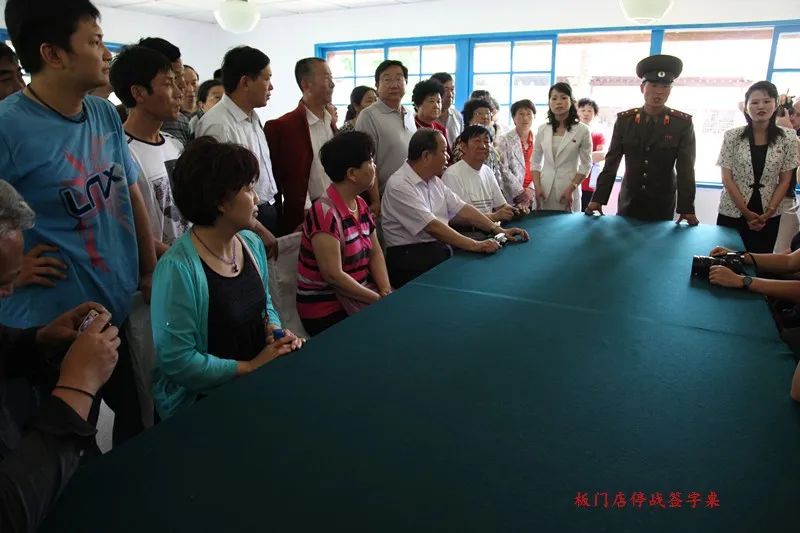
There was no written table sign. The North Korean soldiers introduced the tour in Korean and the tour guide translated. I didn’t hear much introduction to the Chinese People’s Volunteers.
According to reports, there are 18 texts of the armistice agreement and annexes placed on the square table in Korean, Chinese and English. Among them, 9 copies from China and North Korea are bound in dark brown leather, and 9 copies from the other side have the emblem of the United Nations printed on the cover. blue. After signing, each party will keep one copy and the other will be kept by the Military Armistice Commission.
Photography was allowed at the table, and we took photos.
Coming out of the hall, the receptionist and tour guide took us to the temporary military demarcation line. The tour guide said to us with a cold expression: "The temporary military demarcation line is only 50 centimeters high. If tourists cross it, they are smuggling. It will be difficult to come back and it will definitely lead to a diplomatic incident. If soldiers cross it, it is invasion, and bullets will be fired immediately." Fly over. So be careful."
My scalp felt numb again.
After turning a small concrete ramp not far away, we came to the "joint security area" of Panmunjom, which is a circular area with the military demarcation line as the center and a diameter of about 800 meters. It is divided by the "United Nations" army and the North Korean army. Jointly guarded, the official name is the "Joint Security Zone." Before 1976, guards from both sides could travel freely. After the "Panmunjom Incident" on August 18, 1976, a cement line 50 centimeters wide and 50 centimeters high was set up above the military demarcation line, stipulating that no guard sergeants from both sides were allowed to cross.
As early as after the armistice, North and South Korea built 24 buildings facing each other in the north and south in this "joint security zone" with a diameter of about 800 meters. In the north, North Korea built "Panmun Pavilion" and "Unification Pavilion"; in the south, South Korea built "Freedom House" and "Peace House", which serve as the location of the respective warning and liaison agencies and a place for dialogue between the two sides. With the military demarcation line as the central baseline, there are also seven sky-blue simple wooden houses, half of which are located in the south and half in the north. These are the conference hall of the Military Armistice Commission and the workplace of the Neutral Nations Supervisory Committee.
In the conference hall of the Military Armistice Commission, a long table is in the center, with a line engraved on the table, which is consistent with the actual military demarcation line. During the meeting, representatives from both sides sit on each side and do not cross each other's boundaries. Outside the house, North Korean and South Korean security guards stood facing each other across a 50-centimetre-high cement line and did not interact with each other. Visitors can enter this conference hall and sit on the chairs on the other side to experience the cross-border feeling. I also boldly touched the dividing line on the table and crossed the border once on the Korean side.
The North-South Military Demarcation Line is 241 kilometers long and has a total of 1,291 yellow boundary markers. According to regulations, 2,000 meters on both sides of the military demarcation line are demilitarized zones to avoid friction between the two sides. Today, Panmunjeom has been opened up as a tourist spot for foreign tourists by both North and South Korea.
Another unique sight in Panmunjom is the flag towers erected on the north and south sides. The flag tower on the southern side is only 100 meters high; while the flag tower on the northern side is 160 meters high and the flag is 30 meters long, known as the world's longest. Under the flag is a village composed of several small buildings. South Korea calls it a "propaganda village." There are no villagers living here, only a few staff and maintenance workers responsible for raising and lowering the flag. On the South Korean side, there is also a village named Daeseongdong, which South Korea calls "Freedom Village".
During our visit, the North Korean military sentry posts were numerous and heavily guarded; while the South Korean side only saw four sentries changing guard. The tour guide explained to us: "This is a rule. When tourists come, the sentries are in place; when tourists leave, the sentries are evacuated. The same is true in South Korea, but there are no tourists there today." I noticed that on the eaves of the buildings facing each other, there were cameras. The camera stared at each other closely, counting, there were four stations on the North Korean side and eight stations on the South Korean side.
Standing on North Korea's "Unification Pavilion" and looking around, you will see clear mountains and green skies. What a beautiful river and mountain! But a cement wall 50 centimeters wide and high has turned into an insurmountable gap for a nation. Who is to blame for this scar, this tragedy, and this pain in the heart?
The clouds of war are looming, and the atmosphere here is tense.
9. Pyongyang city tour

Pyongyang, capital of the Democratic People's Republic of Korea. It is located in the northwest of the Korean Peninsula, at the junction of Pyongyang plains and hills on the lower reaches of the Taedong River. The east, west and north sides are undulating hills. Because part of the land is on the plains, it is called Pyongyang, which means "flat soil". The Datong River and its tributary Pongjiang River flow through the urban area. There are Lingluo Island, Yangjiao Island, Liyan Island and other islands in the river, with beautiful scenery. The urban construction area only accounts for 20%, and the remaining 80% is green land such as parks. The green area per capita is about 50 square meters, making it one of the cities with the largest proportion of green area in the world. The Datong River divides the city of Pyongyang into east and west parts. To the east of the city is Ruiqi Mountain, to the southwest is Cangguang Mountain, to the north are Geumsu Mountain and Moran Peak, and to the south is the plain. It covers an area of 3,149 square kilometers and has a population of 3.26 million.
Pyongyang is an ancient city with a recorded history of more than 3,000 years. It is also a modern city with beautiful scenery. The Datong River flows from the northeast to the southwest, passing through the city, with green willows on both sides. The streets such as Chollima Street, Cangguang Street, Guangfu Street, and Tongyi Street are wide and clean, with thick shade on both sides. The buildings such as Kim Il Sung Square, the People's Grand Study Hall, the Juche Tower, the Arc de Triomphe, the Mansudae Art Theater, and the Koryo Hotel are tall and magnificent. There are many scenic spots in the mountainous areas around Pyongyang. On Dacheng Mountain in the northeast of the city, the ruins of the ancient Goguryeo City and Anhak Palace are preserved. There are also many scenic spots and historic sites on Moran Peak in the north of the city. Among them, the North Korea-China Friendship Tower made of granite on the north side of the mountain The tower contains a list of the martyrs of the Chinese People's Volunteer Corps who died in the War to Resist U.S. Aggression and Aid Korea. It is a place of worship that every Chinese who goes to pilgrimage must visit.
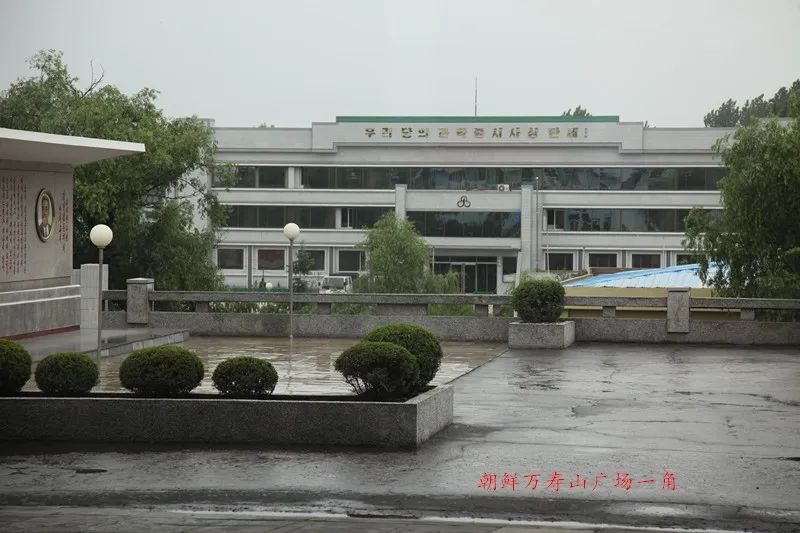
When I first arrived in Pyongyang, I visited Kim Il Sung Square and the Juche Tower. Under this premise, the tourist spots arranged by the tour guide for Pyongyang are: Mangyongdae Former Residence, Mansudae Monument, Arc de Triomphe, Friendship Tower, A school, a subway station, and a folk souvenir shop.
Mangyongdae Former Residence is located on the bank of the Datong River in the western suburbs of Pyongyang, 12 kilometers away from the city center. It is a simple thatched house where ordinary people live. Kim Il Sung was born here and spent his childhood here. Now it is a holy place to commemorate the leader. This single house is surrounded by mountains and rivers, nestled among the green pines and cypresses, and it is very solemn.
Mansudae is a hillock in the center of Pyongyang, the former site of Gudian Jiangtai. The Mansudae Monument was built on the occasion of Kim Il Sung's 60th birthday in April 1972. It consists of large-scale plastic arts sculptures and covers a total area of 240,000 square meters. The tower is 22.8 meters high and 50 meters long. With the bronze statue of Kim Il Sung as the center, it is composed of group sculptures and large mosaic murals. The height of the group sculpture is 22.8 meters, with 228 people (119 people on the right and 109 people on the left), with an average height of 5 meters. The large monument is lined with the Korean Revolution Museum to the north, and a large mural of Mount Paektu, the holy land of the revolution, is inlaid on the front wall.
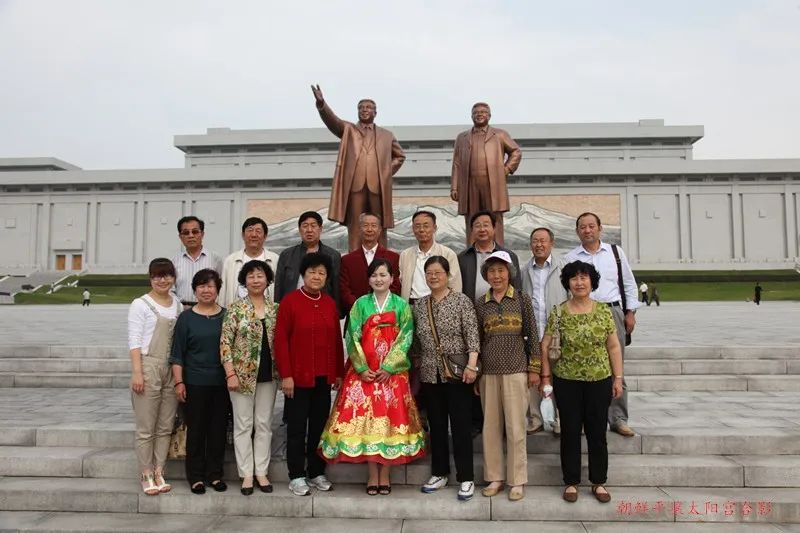
On April 13, 2012, a new bronze statue of Kim Jong Il was added to the Manshou Terrace. Kim Il-sung and Kim Jong-il stood side by side. Kim Il-sung was smiling, raising his right hand and pointing to the sky, looking forward to a bright future. The large group of statues on the left and right sides were also remodeled accordingly.
Following the guidance of our tour guide Xiao Zhao, we voluntarily spent 300 yuan to buy 5 bouquets of flowers at the small shop at the entrance of the square, lined up in a line in front of the statues of the two leaders, and bowed three times. We saw that pedestrians passing by were very conscious. Primary school students stood down and respectfully performed the Young Pioneers salute; adults stood down and bowed respectfully three times.
The Revolution Museum covers an area of 50,000 square meters, with an exhibition room area of 20,000 square meters. It has more than 90 showrooms and an exhibition line of more than 5,400 meters. Divided into 7 parts, it uses the revolutionary history of Kim Il Sung and Kim Jong Il and the history of North Korea's revolutionary struggle to educate the people on Juche ideology and revolutionary traditions.
Mansudae also houses the meeting hall of the Supreme People's Assembly of North Korea, the country's highest power organ; a bronze statue of Chollima with a total height of 46 meters and a length of 16 meters; a Student and Children's Palace covering an area of 300,000 square meters; a construction area of 6 10,000 square meters of art theater, etc. Overall, it looks spacious, majestic and majestic.
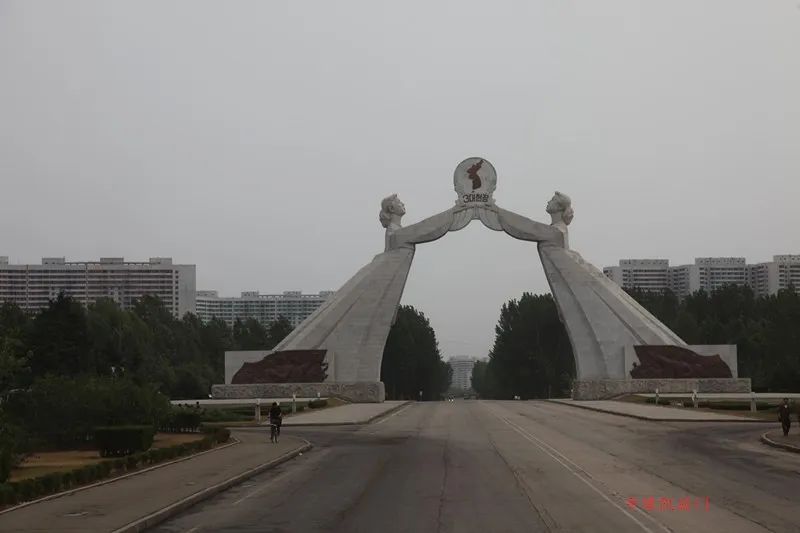
The Arc de Triomphe is located at the foot of the scenic Moran Peak, on the cross street in front of Kim Il Sung Stadium. It was built in April 1982 on the occasion of Kim Il Sung's 70th birthday. It is 60 meters high and 52.5 meters wide. It is composed of more than 15,000 pieces of high-grade granite and is ten meters taller than the Arc de Triomphe in Paris. It was erected to praise Kim Il Sung for his great cause of recovering North Korea and his triumphant victory.
The China-North Korea Friendship Tower was built to commemorate the martyrs of the Chinese People's Volunteers who sacrificed their lives in the War to Resist U.S. Aggression and Aid Korea. It was first built in 1959 and expanded in 1983. The tower was sited on the Peony Peak in Pyongyang City. It has a towering terrain, a broad view, and is surrounded by flowers on the hillside. It is in full bloom, with dense shade from pines and cypresses, making it a good Feng Shui place for the souls of the dead to rest in peace. According to the tour guide, this address was selected by Premier Zhou in person when he went to North Korea for negotiation. Inside the Friendship Tower, it is quiet and solemn. With reverence, our group bought 5 bouquets of flowers and collectively bowed to the Martyrs Monument. Opening the thick commemorative album, rows of names suddenly came into view. Among them, we saw the names of several fellow villagers whose native places were Mizhi and Jiaxian. They have been buried forever among the mountains and rivers of North Korea. Among the flowers on the east hillside, several Korean children wearing red scarves were looking for something in the grass. We tried to approach them, but they raised their wary eyes and walked away quickly.
The tour guide took us to a school. I secretly thought that the schools in the capital that foreign friends would visit must be top-notch. When I walked into the school gate, the appearance of the school before my eyes was quite different from what I imagined. This is an eleven-year comprehensive school from elementary school to high school. Judging from the photos, information and other promotional materials posted on the wall, the quality of education is among the best in North Korea. But the infrastructure, including the two-story teaching building and the extracurricular activity building, are very old. The large playground is not hardened and is paved with gravel. The microscopes in the biochemistry laboratory are the same ones I used when I was studying in Ma Zhong and Fuzhong 50 years ago. They are the same old-fashioned ones.
North Korea’s education system is unique. Students attend classes in the first half of the day and engage in various extracurricular activities in the second half to cultivate professional knowledge from an early age. Among the young students in North Korea, no one is seen wearing glasses. According to the tour guide, 30% of students after graduating from high school are scheduled to go to college for further studies; among the rest, all women are assigned jobs and all men are assigned to serve as soldiers.
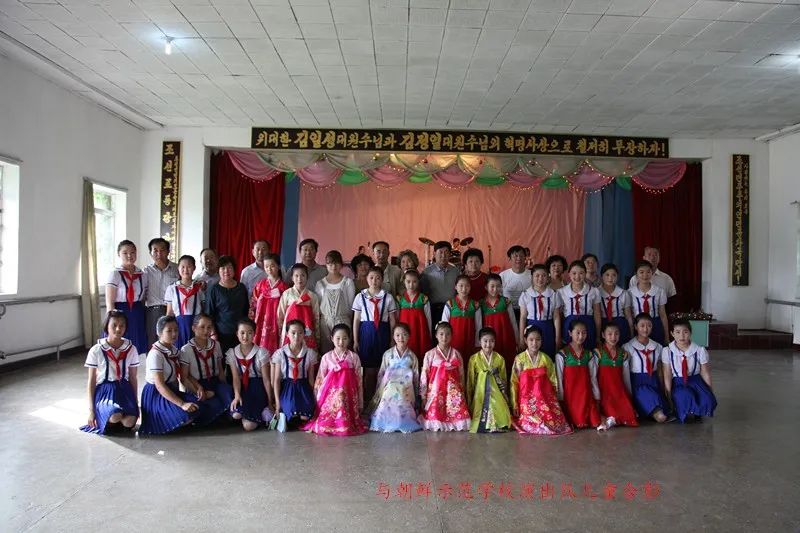
In the large classroom of the extracurricular activity building, we watched the artistic performances of children's students: chorus, solo, dance, instrumental solo, ensemble, etc. Their skillful skills and loud singing voice won us rounds of applause. What particularly resonates is that the Chinese songs sung by these children are excellent and their words are accurate and well-tongued. The song "Without the Communist Party, there would be no new China" made us excited. We were so excited that we randomly took out 1,000 yuan as a reward! The teacher in charge was very happy when he received the 1,000 yuan. He quickly called these young artists to come among us and take a group photo.
A bright smile will last forever, and this memory will always be beautiful.
After saying goodbye to school, we arrived at Rongguang Station of Pyongyang Subway. As soon as we got off the bus, a heavy rain suddenly fell. The tour guide Xiao Zhao said happily: "There is a severe drought this year and it has not rained for several months. Chinese friends brought sweet rain, which is a symbol of friendship between the two peoples and a blessing to the Korean people." "We applaud this young man's wise expression!

The Pyongyang Metro started construction in 1968 with the support of China, the former Soviet Union, and Eastern European socialist countries. The first subway "Cholima Line" was opened to traffic on September 6, 1973; the second "Innovation Line" was opened in North Korea in 1975. Open to traffic on National Day. The two subways are in the shape of a cross, running through the city from east to west, north to south, with a total of 17 stations, a total length of 40 kilometers, and an average daily passenger flow of 400,000 people. With an average depth of 100 meters and a maximum depth of 200 meters, it is the deepest subway in the world. When it was first opened to traffic in 1973, some of the carriages used in the subway were products from the Changchun Bus Factory in China. Since 2000, some new passenger cars made in Germany have been updated and used. Because the vertical depth is below 100 meters, a 150-meter-long rolling elevator takes three minutes to run. Also because of the depth, although there is no air conditioning in the subway station, it maintains a constant temperature of 19 to 20 degrees Celsius all year round.
Foreign tourist groups generally visit and take the one-stop section from Rongguang Station to Fuxing Station. When we entered the subway, it was during rush hour, and the elevators and platforms were full of people. The people of North Korea looked at us with friendly eyes, but the two sides could not communicate. The biggest features of the subway platform are the magnificent chandeliers, high-end marble floors, and 80-meter-long mosaic murals on both sides engraved with "revolutionary events." Inside the carriage, portraits of Kim Il Sung and Kim Jong Il hang side by side directly above them. The carriages have no partitions and are straight-through, which is a bit old. The overall equipment is similar to Beijing's original Line 1 old subway, but it runs smoothly. The flight attendants are all beautiful women. They wear uniforms and look heroic, becoming a beautiful scenery in the subway.
The folk souvenir shop we visited is on the street next to the Arc de Triomphe. The two connected facades are about 200 square meters. The products inside are mainly some small specialties and national costumes of North Korea; the price tags are marked with North Korea and China. Kind of price. Judging from the numbers on the price tag, the ratio of Chinese and North Korean coins is approximately 1:17. The store clerk had an expressionless face and ignored the tourists, looking careless. I immediately thought of the situation before China's reform and opening up, when it was a large state-owned enterprise and a large collective. It was exactly the same. I walked around in a circle, but it was boring. It seems that people all over the world are the same and cannot afford to eat from the "big pot"!
The Pyongyang tour ended at nightfall. The tall and splendid buildings we saw throughout the day all made people feel the greatness of this nation; but what lingered in our minds were those dilapidated and miscellaneous international tourist trains that were still in use. Cars, freight trains, gravel trunk roads, dim electric lights, old teaching buildings, unhardened playgrounds, etc., can't help but feel a touch of sadness in my heart.
What if there were more people's livelihood and less image?
10. Visit Miaoxiang Mountain
Miaoxiang Mountain is located in the northwest of North Korea, 150 kilometers away from Pyongyang. The distance between east and west and north and south is 28 kilometers each, with a radius of 128 kilometers and an area of 375 square kilometers. It is a famous tourist attraction and one of the four famous mountains in North Korea. It is named for its wonderful mountain shape and the fragrance of arborvitae on the mountain. It is known as one of the eight scenic spots in North Korea. one. Among the mountains, several peaks standing side by side are above 1,500 meters above sea level; the highest Pilu Peak is 1,909 meters above sea level.
When visiting this place, there are two main attractions: one is Puxian Temple to see the history. The second is to visit the International Friendship Exhibition Hall and look at the present.
Puxian Temple is one of the five major temples in North Korea and has a high status in the three treasures of North Korea's Buddhism, Dharma and Sangha. It was built in 1042 and rebuilt several times. The existing building was remodeled between 1441 and 1765. It was originally composed of 24 buildings and pagodas, including Daeungjeon, Jogyemun, Liberation Gate, Cheonwangmun, Manse Tower, Guanyinjeon, Yeongsanjeon, Goujungsa Temple, a four-corner 9-story pagoda, and an octagonal 13-story pagoda.
There are three gates to enter Puxian Temple. First enter the Caoxi Gate, then the Liberation Gate. It is said that those who walk through the Liberation Gate will be relieved of all pain and fatigue. Go past the Heavenly King Gate. There are four statues of the Heavenly Kings in the Heavenly King Gate, which were built in 1644. After passing the Banzai Tower, we arrived at the main hall of Puxian Temple, Daxiong Hall.
Main Hall is the most gorgeous and largest building in the temple. It is located in the center of the temple and its structure is basically the same as that of Chinese temples. The plaque on the main entrance has gold characters on a black background and three Chinese characters: "Daxiong Hall". The hall enshrines Vairuzana Buddha, Sakyamuni Buddha, and Amitabha Buddha, as well as Manjushri and Samantabhadra Bodhisattva.
Walk out of the Main Hall and follow the corridor paved with the unique black and white pebbles of Myohyangsan Mountain to the temple. In the courtyard, sea pines are green, cypress trees hang low, incense is lingering, and the environment is elegant. There is an old mulberry tree that has grown for more than 400 years and has lush branches and leaves. It is a natural cultural relic.
In front of the Main Hall is an octagonal thirteen-story stone pagoda, which is the same height as the Main Hall. It was built in 1042 and is the treasure of Puxian Temple. Looking around the pagoda, the stone pagoda has distinct Korean national characteristics, with a large base and a top that gradually become smaller, just like stacked octagonal hats, giving people an exquisite and clear feeling. The layers of the stone tower are octagonal, and the upper and lower corners are accurately connected in a straight line. There is a wind chime hook on each corner. After experiencing the vicissitudes of life, part of the white stone at the base has turned brown.
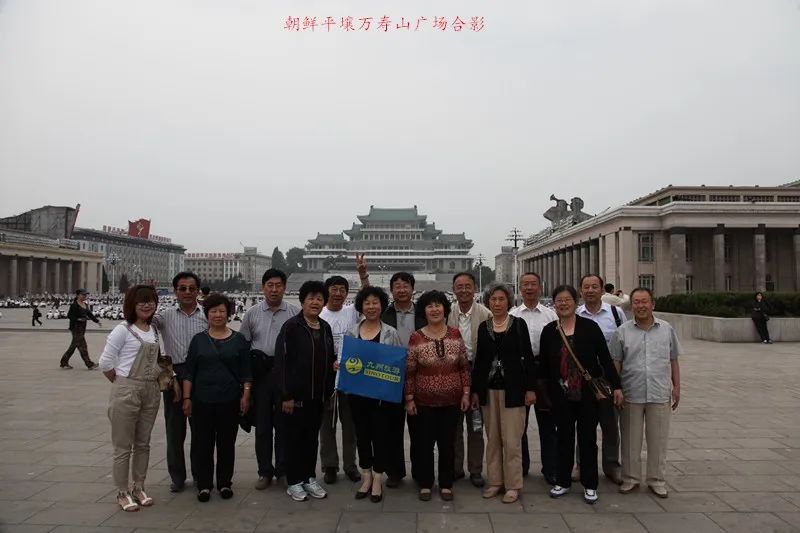
Opposite the octagonal thirteen-story pagoda, there is a four-cornered nine-story pagoda, which was built in 1044, two years later than the octagonal thirteen-story pagoda.
There is also a Guanyin Hall between Heqi Peak and Longzhu Peak behind Puxian Temple. Its architectural style and the golden lotus seat of Guanyin Bodhisattva in the hall are basically the same as those in China.
Puxian Temple contains North Korea's priceless "Eighty Thousand Tripitaka", which is the famous "Korea Sutra". It is a sutra printed on more than 80,000 wooden boards, so it is called the "Eighty Thousand Tripitaka". Engraved and printed from 1236 to 1251, a total of 6780 volumes are printed with Chinese characters thread-bound, neat handwriting and exquisite printing. It is the only surviving copy and a priceless treasure.
Puxian Temple also preserves "Records of the Ri Dynasty" and "History of Goryeo". The Houzhong Shrine was built to commemorate the 73-year-old monk Niishan Master who organized more than 5,000 disciples and volunteers to fight the Japanese during the Imjin Japanese Rebellion. The master passed away here at the age of 86. The temple still preserves the portrait of Master Xishan, as well as the portraits of his main disciples on the left and right.
Today, Puxian Temple is a holy place for friendly exchanges between the Korean religious community and the world's religious communities.
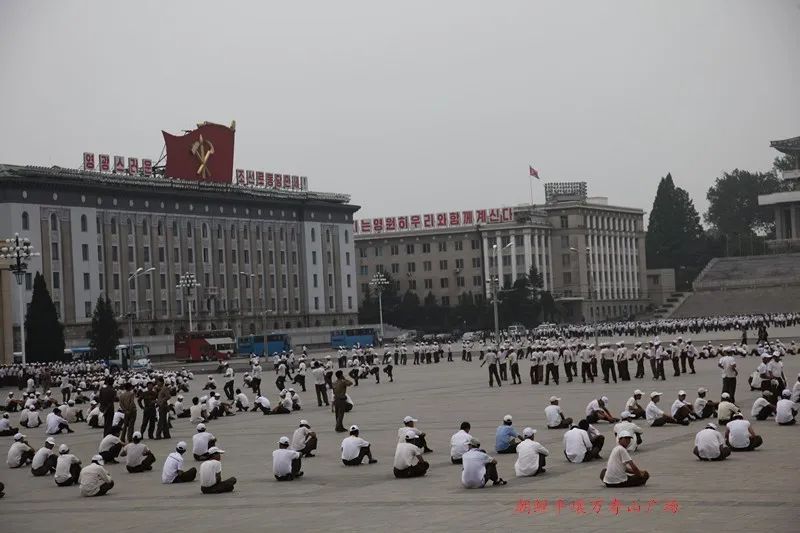
The International Friendship Hall at the foot of Miaoxiang Mountain is composed of the Kim Il Sung International Friendship Hall and the Kim Jong Il International Friendship Hall. The two buildings are 200 meters apart. Looking from a distance, there are two large Korean-style buildings that are similar to Chinese-style pavilions. They are tall, majestic and brightly decorated. As we got closer, we realized that what we were seeing was the exterior facade. The inner parts are all dug in the mountains and are large caves connected to each other. The two tall and thick cave doors are made of pure copper, and there are fully armed military guards at the entrance. After entering the gate, you enter the cave. There are no windows inside and it is completely closed. The constant temperature is controlled at 20℃, there are elevators and escalators; pure white high-end decoration, high-end lamps with soft and bright lights, the entire cave is as bright as day, smooth, clean and magnificent; the museum is led by special commentators wearing national costumes Visit and explanation. Photography is prohibited inside the museum, and strict security checks will be conducted first. Tourists' hats, bags, cameras, etc. must be stored. Every visitor must wear shoe covers before entering.
The commentator first took us into the Kim Il Sung Wax Statue Museum to pay tribute to the leader. This wax statue of Kim Il-sung was made and donated by China in 1996 after Kim Il-sung's death in 1994. It was completely built to life size and is very realistic. Kim Il-sung stands in a standing pose, with Mount Paektu and green fields of North Korea in the background. With background lighting, it is lifelike. In front of the wax statue, we lined up and bowed three times.
The Kim Il Sung International Friendship Hall was built in 1974 and opened on August 28, 1978. Outside the exhibition hall is a 6-story building with a height of 43.3 meters and a total construction area of more than 50,000 square meters. There are 220 exhibition rooms in the cave, displaying by continent and country more than 220,000 gifts presented to Kim Il Sung by political parties, heads of state, people from all walks of life and politicians from 178 countries in the world. Among them, China has the largest number of gifts. The docent led us through the long corridors and visited two of them. The exhibits are extremely exquisite and dazzling.
The Kim Jong Il Gift Hall was built in the 1980s and was visited in May 1996. It covers an area of more than 20,000 square meters and has more than 50 exhibition rooms, housing more than 50,000 gifts from 162 countries. In this museum, a new Kim Jong-un exhibition room was set up this year, in April 2012, with hundreds of new gifts from dozens of countries.
On the third floor outside the Kim Jong Il Pavilion, there is a viewing platform with sofas where visitors can rest and take photos.
Looking from here, you can see the green peaks of Miaoxiang Mountain and the gurgling streams. The scenery is extremely beautiful!
11. Unique travel meals
Before going abroad, Dandong tour guide Xiao Zheng, a girl with a sweet voice, specifically told us: "When she led the team to North Korea a year ago, most tourists felt that they were not full. Have you considered going to the supermarket to buy some convenience foods, fruits, etc. "Bring it with you." When everyone heard this, they became nervous and went to buy it quickly. I also spent 100 yuan and carried a medium-sized bag of ham sausage, instant noodles, bread, apples, etc., preparing to spend a few days after arriving in North Korea. Hard times. The reality is different from what we thought. North Korea has changed a lot in one year. This is reflected in the tourism quality, which is that the quality of catering has improved significantly. Not only can you eat well, but the variety and variety have also improved. The biggest advantage of a completely planned economy is that no matter what happens, the country can have unified command. This is exactly the case in North Korea. It can be seen that in order to attract more tourists, especially Chinese tourists, the competent authorities have made careful preparations and arrangements. Two lunches with outstanding features left a deep impression on us. In comparison, domestic tour group meals are enough to make people angry.
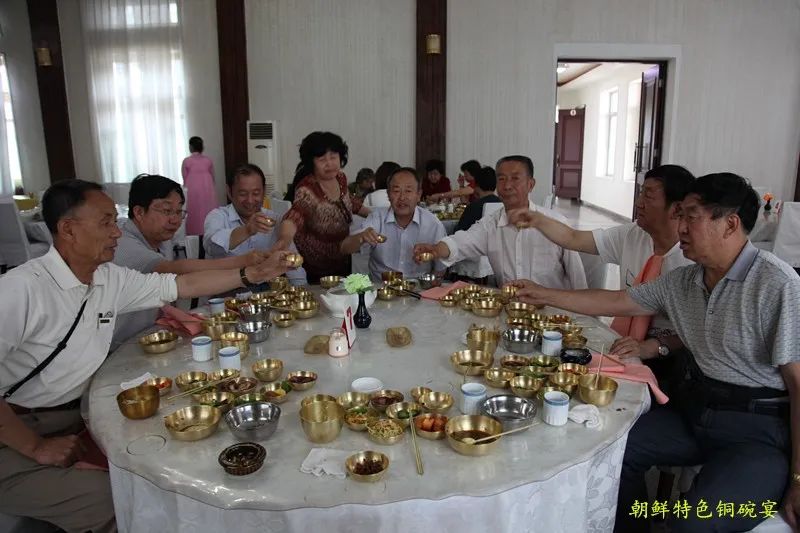
The first is Kaesong’s “Twelve Copper Pot Set”. This is a famous dish in North Korea, and it has been included in the group meals of Chinese tourists as an exception. There are 6 people per table, one serving for each person, 12 copper bowls, a pair of copper chopsticks, and a copper spoon for each serving. The table is filled with golden light and magnificence; once sitting in front of the table, everyone becomes a noble emperor, the golden light reflects the real dragon, I am the one who respects the magnificence, you cow!
The food is ready: nine small bowls of cold vegetables, a small bowl of sake, and a bowl of rice. A bowl of seasoned soup. Nine kinds of cold dishes were placed in nine small copper bowls, each bowl was about the size of a chopstick; a small bowl of sake, about one or two, a Korean special brew, with low alcohol content and a slightly sweet taste; The rice is optional and can be added; the seasoning soup is only half a small bowl and tastes good. With my stomach, it’s no big deal to eat this little bit of food. I’ll absorb it all in three or two bites! Fortunately, I'm not too full and not hungry either. Fitness experts say that it is healthiest to eat every meal until you are 20% full. The meal I ate made me feel good about myself, just right!
The second is an elegant restaurant in downtown Pyongyang, probably also a designated canteen for receiving international friends. What is on the dining table is "Pyongyang Hot Pot", which is known as "North Korea's first meal". Including this as an exception in group meals for Chinese tourists shows how much the government attaches importance to the tourism industry and Chinese tourists. The tour guide said: "This hot pot is also called "Fairy Pot", which means the guests are worshiped as gods." After hearing this, I felt a little excited. In fact, there are on the table: each person has a small flat-bottomed hot pot with a diameter of about 16 or 7 centimeters, with half a pot of boiled water in it, and the bottom is heated with solid alcohol; each person has a small wicker wooden plate with half a plate of fine wine inside. Thin shreds of cabbage, a small strand of vermicelli, two thin slices of pork about one square inch in size, two pieces of tofu about the same size as meat, a few bean sprouts, and a raw egg; there are also three small plates of cold food for the whole table to share. Vegetables; the staple food is rice. Each table is provided with four bottles of Pyongyang-produced "Taedonggang" beer.
The beer tastes very refreshing, but the hot pot is completely different from the ones in China. There are no condiments and no oil at all. I suddenly had doubts, does this hotpot taste good? Under the guidance of the waiter, we added some Korean soy sauce to the boiled water in the hot pot, beat the eggs in, and then added other things one after another. Once cooked, taste it and hey, it tastes pretty good! It’s really a land and a land and a people, it’s amazing! The feeling of this famous meal is the same as the one in Kaicheng: I feel good about myself, just right!
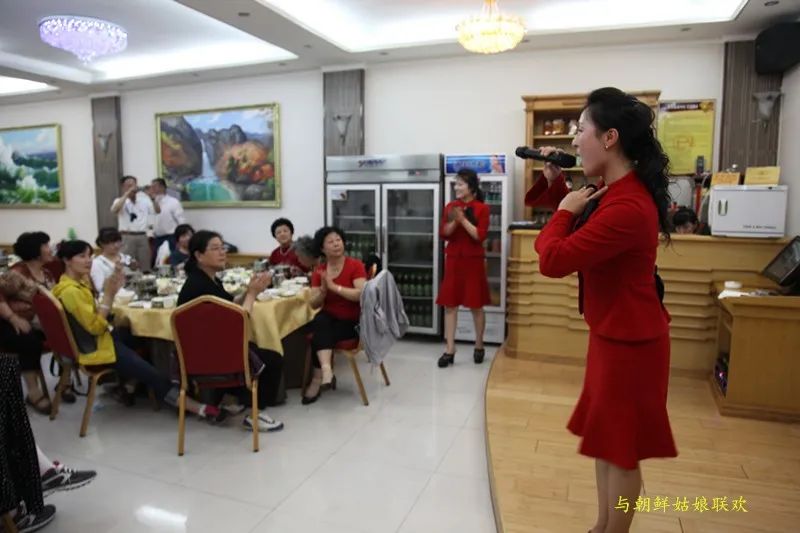
We were also impressed by the dinner at another restaurant. After tasting the delicious food, the enthusiastic host arranged for the waiters and four young beautiful girls to perform a half-hour cultural show for us. I think this is probably a deliberate arrangement within the government's plan. It is true that North Korean women are generally beautiful; and it is not an exaggeration to call these few particularly beautiful. They played, played, sang, and jumped around on the small stage; their singing voices were on full display, which was captivating. In particular, he is proficient in Chinese and Chinese songs, and his singing voice is no less impressive than some domestic singers. They can sing very difficult songs such as "Heaven's Road", "Qinghai-Tibet Plateau", "The Moon Represents My Heart", melodiously and resonantly. During the performance, they would occasionally bring one of us on stage to sing together. I was also pulled once. Even though I couldn't understand the tone, I couldn't just throw someone into a foreign country. So I bit the bullet, went on stage and yelled according to the pronunciation and lyrics of the person.
It strengthens friendship, not to mention such a beautiful foreign girl singing on the same stage with me, and the title of the song is "The Moon Represents My Heart"!
Performances for Chinese tourists always end with the exciting "Without the Communist Party, there would be no New China"; in Long Live Friendship, 1,000 yuan is presented to the stage; encourage and encourage, let the everlasting China-North Korea friendship live forever!
On the way back to our accommodation, the tour guide told us: These girls are all the children of North Korean provincial and ministerial leaders. They have not only undergone rigorous training in North Korea, but also spent three years in Shenyang, China. The management of these children is very strict. They are not allowed to go out alone or marry outside. If they make a mistake, their family members will also be implicated. The salary is uniformly distributed by the state, with an average monthly salary of about 10,000 North Korean dollars, equivalent to RMB 600-700. ; The tips received must be turned over to the organization, and 10% will be returned monthly as a joint bonus for several people. Like the 1,000 yuan you gave them just now, they can get 100 yuan in the end, 25 yuan each. However, this should be a very affordable and high-paying job in North Korea. The lowest monthly salary for ordinary staff is about 500-700 North Korean dollars, equivalent to 30-40 yuan in RMB.
We are speechless.
12. Economic Difficulties

North Korea's economy once had considerable glory. From the 1960s to the early 1980s, China provided North Korea with a large amount of selfless assistance despite its own difficulties; the Economic Cooperation Conference of the socialist camp headed by the former Soviet Union also provided North Korea with a large amount of assistance; in the international With assistance, North Korea set off a massive "Cholima" construction climax, and the scale of economic construction developed rapidly; many large buildings and infrastructure seen and used today were built at that time. Such as: Pyongyang subway, train station, several large squares; major highways and railways across the country, etc. In 1960, North Korea's GDP was twice that of South Korea; in 1980, South Korea's GDP was equal to that of North Korea. At that time, North Korea's per capita GDP had reached US$1,761, and the country and its citizens were far richer than China.
China began to reform in the early 1980s, and its large amount of selfless aid to North Korea gradually turned into paid trade; with the disintegration of the socialist camp headed by the former Soviet Union, North Korea's foreign aid was completely "weaned". The economic situation plummeted and entered a difficult period. After losing the protection of several big brothers, a sense of crisis suddenly arose. The program of "military-first politics" was officially implemented. A country with a population of 24 million supports 1.2 million regular troops and 7 million militiamen. You can imagine how heavy this burden is! Due to the "nuclear weapons test", Western countries led by the United States have implemented long-term and harsh economic sanctions on North Korea, which has made the economic situation even worse. From 1990 to 1998, the economy experienced nine consecutive years of negative growth. Things changed after 1999, but development is still slow. The people's living standards have dropped significantly, and the means of production and living materials are severely lacking. Housing and medical care in North Korea are free; clothing and food are provided through a supply system and are rationed by vouchers, just like in my country forty years ago, food stamps, cloth stamps, meat stamps, oil stamps, etc. Taking food as an example, in good times, the daily rations for ordinary workers are 700 grams, for soldiers, 800 grams, and for the elderly, 500 grams. During the most difficult period, the ration supply was reduced to only about 100 grams per person per day. The tour guide said: The day that the North Korean people look forward to most is not the Chinese New Year, but the birthdays of the two leaders. To celebrate the birthdays of the leaders, each person can give an extra 100 grams of meat stamps.
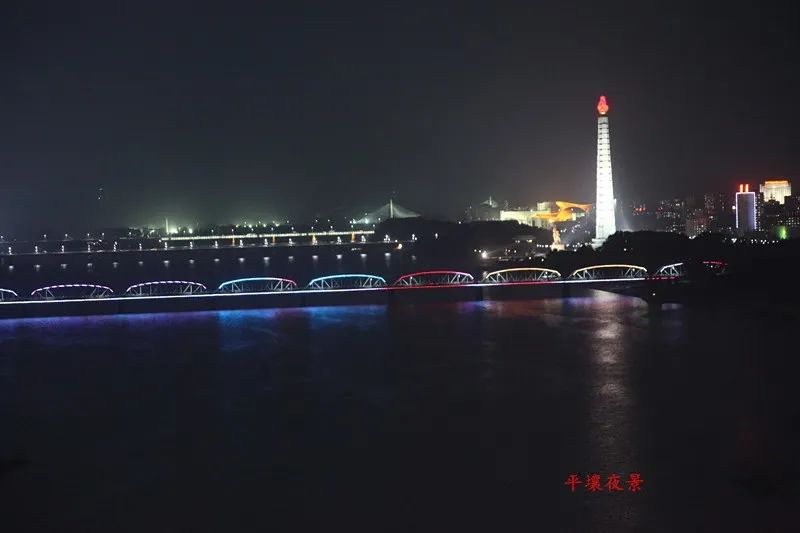
In 2008, North Korea proposed the goal of opening the door to a strong and powerful country in 2012, the 100th anniversary of the birth of Kim Il Sung. In 2010, North Korea emphasized that the entire party should attach great importance to economic development, and called for further accelerating the development of light industry and agriculture to improve people's living standards. And promoted the reconstruction of a number of large-scale industrial projects: such as "Juche Iron", "Juche Fiber", "Juche Fertilizer", "CNC", etc.; and carried out "Pyongyang's new 100,000 housing units" and the construction of "Juche" in various provinces across the country. "Food Processing Plant" and other light industrial projects; reconstruction of Mansudae Street, construction of small and medium-sized hydropower stations in various places, and many other initiatives.
On April 15, 2012, North Korea's third-generation leader Kim Jong-un promised in a public speech: "The people will no longer tighten their belts" and emphasized the importance of economic development.
Maybe, this is a good sign.
We returned to the Yalu River in Dandong City. My four-day trip to North Korea allowed me to come into contact with some of the real conditions behind the mysterious veil of this country.
The country of North Korea is beautiful, the North Korean nation is great, the North Korean people are friendly, and the North Korean economy is difficult.
Looking at the other side of the river, I silently concentrated on wishing: Neighbors separated by a strip of water, brothers who have been together for generations, work hard towards prosperity!
North Korea is worth a visit.
